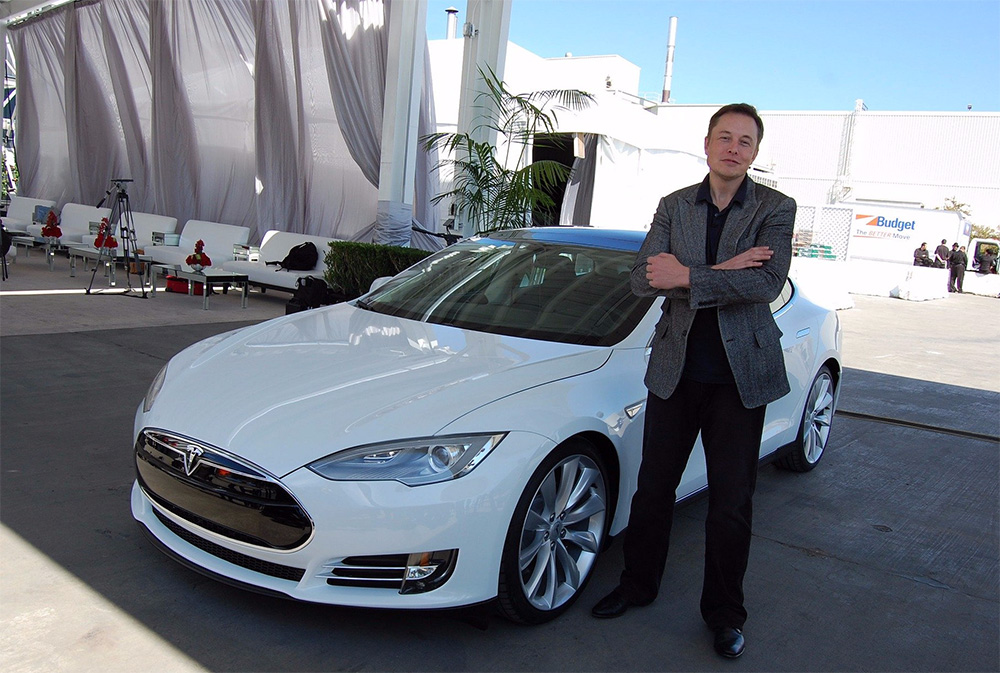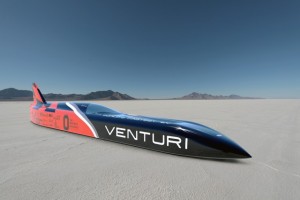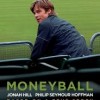 When I saw the new fall line-up for TV I had to wince. After enough years in the business I tend to keep and eye open for new “also rans”. In this case, I couldn’t help noticing (like a lot of people) that there were some conspicuous “Mad Men” 50’s or 60’s era look-alikes – like “The Playboy Club”, “Pan Am” etc. One by one, I could almost envision the creative discussions behind them. Mad Men’s success will have been dissected enough by now and inevitably there would be people eager to nip away at some of the demographic and market they seemed to attract. But it was/is never so simple. They did not track so well and The Playboy Club, despite its best efforts, obvious branding, intrigue, and decent production value, was pulled after only 3 episodes.
When I saw the new fall line-up for TV I had to wince. After enough years in the business I tend to keep and eye open for new “also rans”. In this case, I couldn’t help noticing (like a lot of people) that there were some conspicuous “Mad Men” 50’s or 60’s era look-alikes – like “The Playboy Club”, “Pan Am” etc. One by one, I could almost envision the creative discussions behind them. Mad Men’s success will have been dissected enough by now and inevitably there would be people eager to nip away at some of the demographic and market they seemed to attract. But it was/is never so simple. They did not track so well and The Playboy Club, despite its best efforts, obvious branding, intrigue, and decent production value, was pulled after only 3 episodes.
My second reaction was a bit of skepticism. Basically, unless each new entry tried to break in with something fresh and unexpected, I would inevitably settle into asking questions like “okay I see the similar sexy retro angle, now who’s their own “Don Draper”. Its like shopping for new tablet! I.e. why? Why do I need this one when Apple seemed to nail the concept so well already? Only because Mad Men in winding down? People didn’t gravitate to it because of the 50’s/60’s era. That helps create flavor no doubt, but it became compelling in many other ways, as always through good story, character, and unexpected situations. I knew from the first episode that it was worth watching – in part due to a great, cool opening title/credit design. Anyway, the point here is not to smack down the creators or producers. Anyone wishing to know more can check out views at places like The Hollywood Reporter http://www.hollywoodreporter.com/live-feed/nbc-cancels-playboy-club-brian-williams-rock-center-241714. who know a hell of a lot more than I. Another good article that looks at this trend can be found at Remote Patrolled, http://www.remotepatrolled.com/2011/10/101-ways-to-make-tv-better-enough-with-the-50%E2%80%99s-60%E2%80%99s-set-series/
I have no doubt there is some fantastic talent behind the new shows – writers, cast, designers, set crews, etc. – but in the end something deeper was at work that should be respected, and that likely started way, way earlier. It’s also pretty universal so we can’t be so quick to point fingers.
 In Screenwriter William Goldman’s famous book on Hollywood “Adventures in the Screen Trade” came out it included an oft quoted line “Nobody Knows Anything”. He was speaking about the business and decision makers, and to be clear he was not putting them down. Rather, he was pointing out just how difficult it is to know what will be a hit form a miss in advance. As we all know, from the film world to games, software, electronics, or a sports team for that matter, its tough when you don’t have a crystal ball. Even tougher when you are at the end of a long boardroom table with all eyes on you as you have to make a decision that could make or break your company, department, or most certainly your own position. The film and TV world is a pretty good bell-weather example for this process. But at the heart of it all is a funny hidden equation for success that includes a measure of top talent, good budget, strong research, good design, fresh concept, and above all, a good hunch. That last one trumps the rest, but am sure creates as many ulcers as awards. I also don’t suspect it is a skill taught in MBA classes. I think it’s one of those ingredients that sits with experience and wisdom, and if you will excuse the term, balls. They all have to work together. One who masters them probably can’t tell you how they did, which is why I don’t doubt that no one will emerge at Apple as the next Steve Jobs. Someone different will come along though – a new star with different strengths. Last I heard Ashton Kutcher was doing well as a replacement in the Two and a Half Men series…
In Screenwriter William Goldman’s famous book on Hollywood “Adventures in the Screen Trade” came out it included an oft quoted line “Nobody Knows Anything”. He was speaking about the business and decision makers, and to be clear he was not putting them down. Rather, he was pointing out just how difficult it is to know what will be a hit form a miss in advance. As we all know, from the film world to games, software, electronics, or a sports team for that matter, its tough when you don’t have a crystal ball. Even tougher when you are at the end of a long boardroom table with all eyes on you as you have to make a decision that could make or break your company, department, or most certainly your own position. The film and TV world is a pretty good bell-weather example for this process. But at the heart of it all is a funny hidden equation for success that includes a measure of top talent, good budget, strong research, good design, fresh concept, and above all, a good hunch. That last one trumps the rest, but am sure creates as many ulcers as awards. I also don’t suspect it is a skill taught in MBA classes. I think it’s one of those ingredients that sits with experience and wisdom, and if you will excuse the term, balls. They all have to work together. One who masters them probably can’t tell you how they did, which is why I don’t doubt that no one will emerge at Apple as the next Steve Jobs. Someone different will come along though – a new star with different strengths. Last I heard Ashton Kutcher was doing well as a replacement in the Two and a Half Men series…
But getting back to the crux. I was speaking recently with some creative heads  and designers from digital companies at Toronto’s recent X-Summit event. This same issue came up when someone mentioned a company commercial on TV that said they always seek innovation and fresh ideas – and have the confidence to take a chance on something new. We’ve heard it before. They are great words and true if put into practice, but what we at the table recognized was that everyone really wants these things! What company wouldn’t? However, in the final analysis, it appears so often that the nod tends to go to the less ambitious options. In essence, people want of those factors, …but without the risk. That’s a tough nut to crack, unless you are a fearless leader or very well protected. The rest must stare at stacks of market and customer research; at team track records or test surveys, and have to determine which one to present to the board and spend someone else’s money on. Its easy to be an arm chair critic after the fact. But the world loves a winner when someone pulls it off.
and designers from digital companies at Toronto’s recent X-Summit event. This same issue came up when someone mentioned a company commercial on TV that said they always seek innovation and fresh ideas – and have the confidence to take a chance on something new. We’ve heard it before. They are great words and true if put into practice, but what we at the table recognized was that everyone really wants these things! What company wouldn’t? However, in the final analysis, it appears so often that the nod tends to go to the less ambitious options. In essence, people want of those factors, …but without the risk. That’s a tough nut to crack, unless you are a fearless leader or very well protected. The rest must stare at stacks of market and customer research; at team track records or test surveys, and have to determine which one to present to the board and spend someone else’s money on. Its easy to be an arm chair critic after the fact. But the world loves a winner when someone pulls it off.
They loved Steve Jobs for doing it, and same for James Cameron. They love the guys at the top who give truly gifted ideas or talent a chance – like the studio who finally gave the nod to the creator of Sponge Bob, or hell, anything from HBO. Or whoever at Rockstar greenlit Grand Theft Auto. I can’t say it was up my alley, but I can say I’d never seen anything like it. The guys at the top aren’t so naive as to ignore a fresh and innovative idea. It just makes their job way easier to prove it enough so they can walk into their meetings with a little more ammo (“help me help you”?). That means more ground work, research, testing, pilots, prototypes, trailers or even some metrics from a YouTube post. Cuz even if they are a supporter, they won’t be able to help you later if they can’t move up the ladder!
Its a quiet but crucial partnership. It may not be fair, but its a reality in a hyper-competitive business world. And that’s what might make it more likely to see some more fresh new products on TV or anywhere else.
DM

 A few years back I was chatting with some Topix artists near their downtown Toronto studio when a car emerged from an underground garage beside us. This cool sleek silver vehicle rose out of the shadows and drove past us – very quickly. Two things stuck with me: the fact that everyone had stopped talking to watch it, and the unique electric motor sound it made. It was my first up close view of a Tesla sports car, and it wasn’t until I reflected for a bit that I concluded that the game had changed and that most people just hadn’t realized it yet, because what had happened is that Elon Musk had just done for cars what Steve Jobs at Apple – just as quietly and elegantly as the thing I saw glide past me.
A few years back I was chatting with some Topix artists near their downtown Toronto studio when a car emerged from an underground garage beside us. This cool sleek silver vehicle rose out of the shadows and drove past us – very quickly. Two things stuck with me: the fact that everyone had stopped talking to watch it, and the unique electric motor sound it made. It was my first up close view of a Tesla sports car, and it wasn’t until I reflected for a bit that I concluded that the game had changed and that most people just hadn’t realized it yet, because what had happened is that Elon Musk had just done for cars what Steve Jobs at Apple – just as quietly and elegantly as the thing I saw glide past me. st set the landspeed record at 341 miles per hour) . But the real kicker is the “cool”. Sure it’s green technology, but what Musk was able to achieve was a sense of disruption along the lines of the iPhone. That’s what it is really. Its got the same buzz. Design style meets substance, plus intelligence, and it became a social media friendly darling. The same line-ups to order and buy, the same sense of technical secrecy. The feeling that something really revolutionary and superior was going on, and that is was all aimed for the next generation. And it didn’t hurt that Road and Track carried the results of a competition among all the fastest sports cars, Ferrari, Porsche, whatever, and that the Tesla entry beat them all. I love it. I love the disruption. Though I feel bad for any of these guys who dropped one or two hundred grand on high performance cars to get people to turn heads, left wondering if they might be stuck with yesterday’s news. Worse, that daughter Cindy might start thinking that Daddy’s car pollutes a lot. Ouch.
st set the landspeed record at 341 miles per hour) . But the real kicker is the “cool”. Sure it’s green technology, but what Musk was able to achieve was a sense of disruption along the lines of the iPhone. That’s what it is really. Its got the same buzz. Design style meets substance, plus intelligence, and it became a social media friendly darling. The same line-ups to order and buy, the same sense of technical secrecy. The feeling that something really revolutionary and superior was going on, and that is was all aimed for the next generation. And it didn’t hurt that Road and Track carried the results of a competition among all the fastest sports cars, Ferrari, Porsche, whatever, and that the Tesla entry beat them all. I love it. I love the disruption. Though I feel bad for any of these guys who dropped one or two hundred grand on high performance cars to get people to turn heads, left wondering if they might be stuck with yesterday’s news. Worse, that daughter Cindy might start thinking that Daddy’s car pollutes a lot. Ouch.












